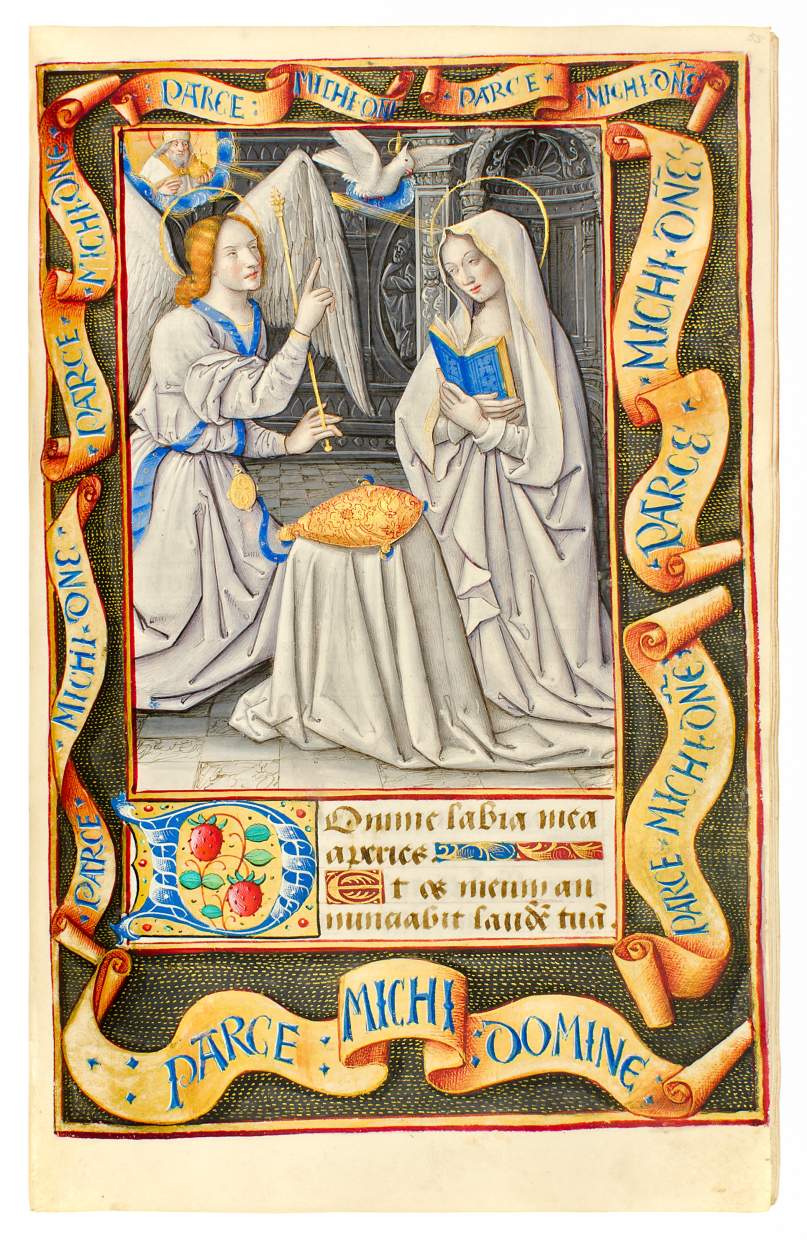Artworks


Book of Hours, illuminated manuscript
by the Master of Petrarch's Triumphs
France, Tours, c. 1490-1500
240 x 150 mm, 4 full-page and 38 small miniatures
fol. 28: Annunciation
Hide caption

Book of Hours, illuminated manuscript
by the Master of Petrarch's Triumphs
France, Tours, c. 1490-1500
240 x 150 mm, 4 full-page and 38 small miniatures
fol. 74: King David sending Uriah to his death in battle
Hide caption

Book of Hours, illuminated manuscript
by the Master of Petrarch's Triumphs
France, Tours, c. 1490-1500
240 x 150 mm, 4 full-page and 38 small miniatures
fol. 9: St. John on Patmos
Hide caption

Book of Hours, illuminated manuscript
by the Master of Petrarch's Triumphs
France, Tours, c. 1490-1500
240 x 150 mm, 4 full-page and 38 small miniatures
fol. 88: Raising of Lazarus
Hide caption

Book of Hours, illuminated manuscript
by the Master of Petrarch's Triumphs
France, Tours, c. 1490-1500
240 x 150 mm, 4 full-page and 38 small miniatures
fol. 121v: St. John Baptist and St. John Evangelist
Hide caption

Book of Hours, illuminated manuscript
by the Master of Petrarch's Triumphs
France, Tours, c. 1490-1500
240 x 150 mm, 4 full-page and 38 small miniatures
fol. 130: St. Margaret
Hide caption
This exceptionally fine Book of Hours shows the hand of a great artist. All large and smaller miniatures are of refined quality and painted in a camaïeu gris style, with the sparing application of some gold and colour. The varied gradients of grey combined with a small proportion of few other pigments emanate a degree of translucency and purity. This style became a hallmark of the hand of the Master of Petrarch’s Triumphs (fl. c. 1495-1510). The illumination of the present manuscript is closely related to that of the so-called Hours of Henry IV (Paris, BnF, ms. lat. 1171), written on gold and illuminated with 80 full-page camaïeu gris miniatures. The Master is named, however, after his illumination in a newly translated copy of Petrarch’s Trionfi commissioned in Rouen (Paris, BnF, ms. fr. 594). Stylistic features in the Triumphs manuscript suggest the artist’s knowledge of the work of Jean Bourdichon and Jean Poyet, both from Tours. Even though the artist was employed for Rouen assignments, he is thought also to have worked in Tours as well as in Paris. It is quite possible that he was an itinerant artist who travelled for his most distinguished commissions. The Petites Heures of Anne of Brittany (Paris, BnF, ms. nouv. acq. lat. 3027) is said to be among the Master's finest works.
The artist of the present Hours may be praised for his miniatures of exquisite refinement and sophistication. His richly decorated prayer books were favoured by those who treasured finely decorated manuscripts, not only as aid to their private devotions but also for the beauty and value of their images. A Book of Hours was more than a compendium of prayers and devotional images. It also served as a devout reader to be handed down within families, often from generation to generation. Its importance in medieval life cannot be overstated, as praying for the fate of the dead (Parce michi Domine, ‘Spare me o Lord’, Job 7:16), in fact often meant praying for the salvation of the soul of a departed family member and was considered a great act of charity. While rooted in spiritual aspiration, this opulent manuscript nonetheless provided the owner with a luxury object that expressed her/his social status.
Read more about this manuscript in our Spotlight.



